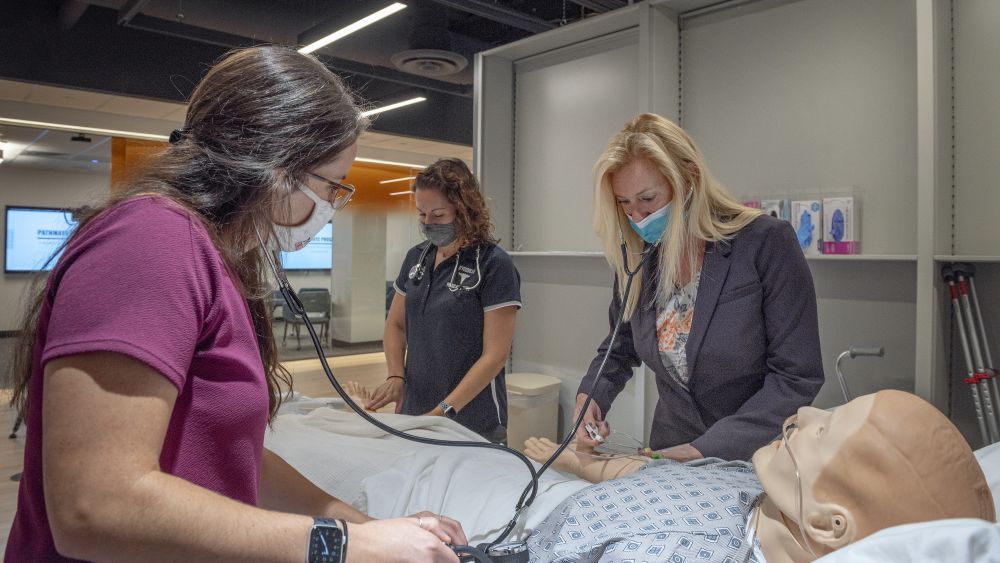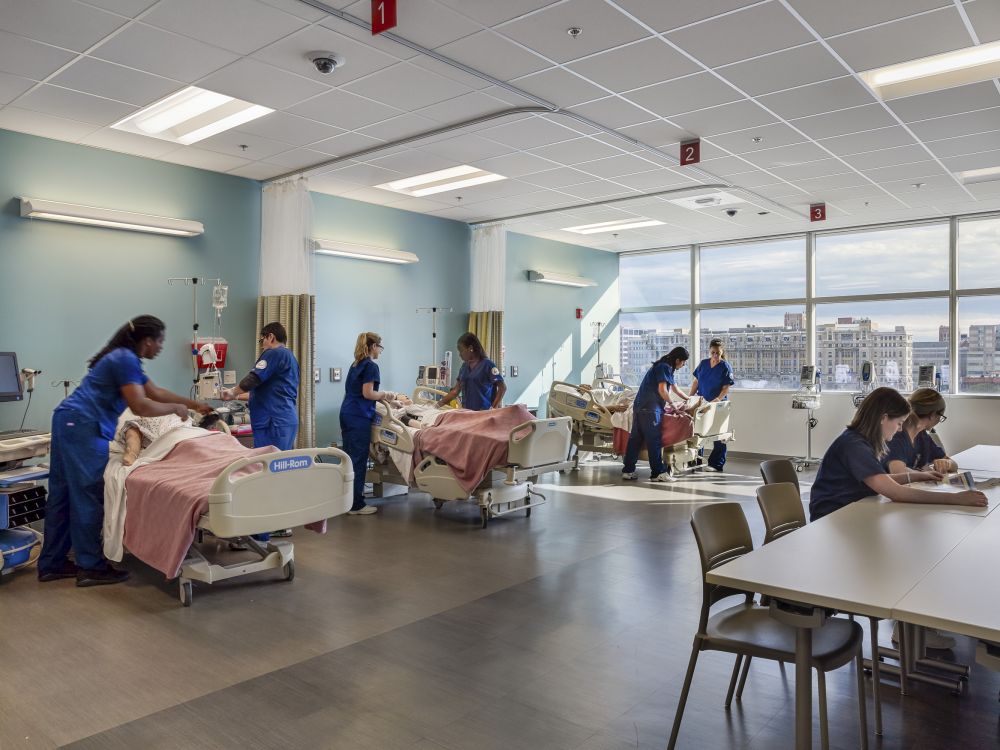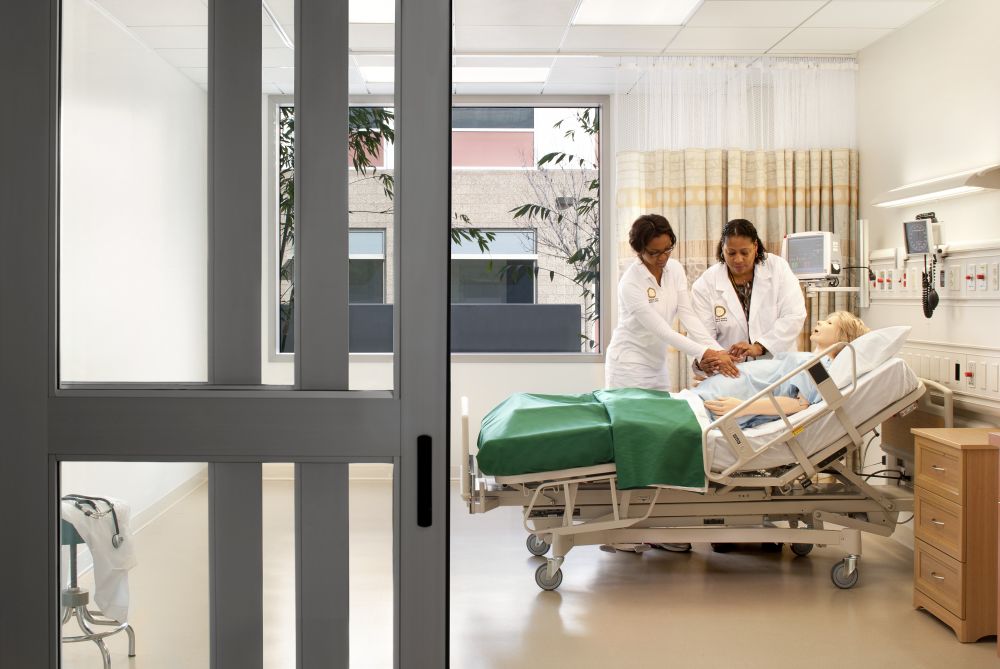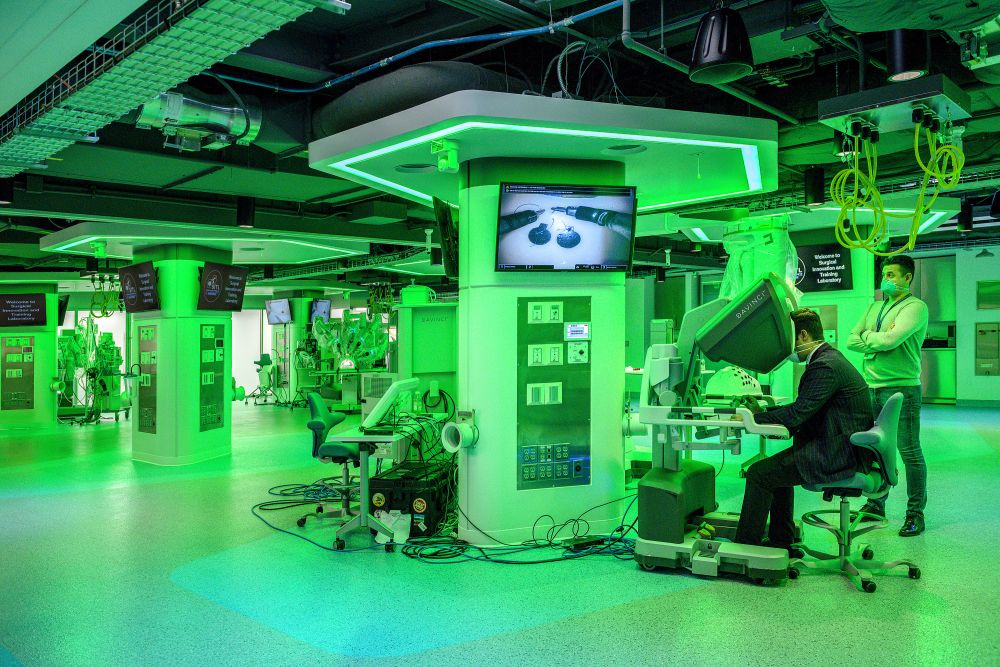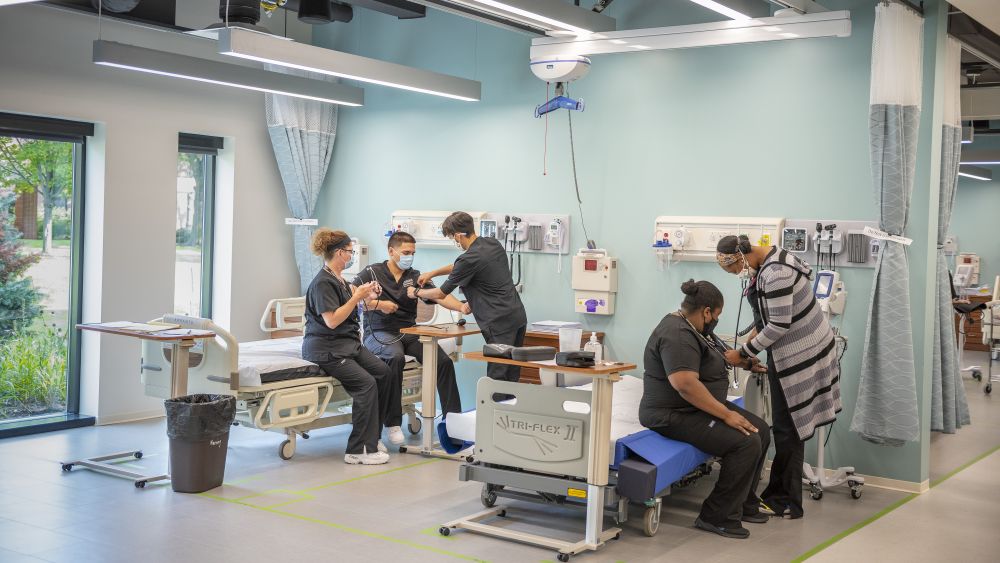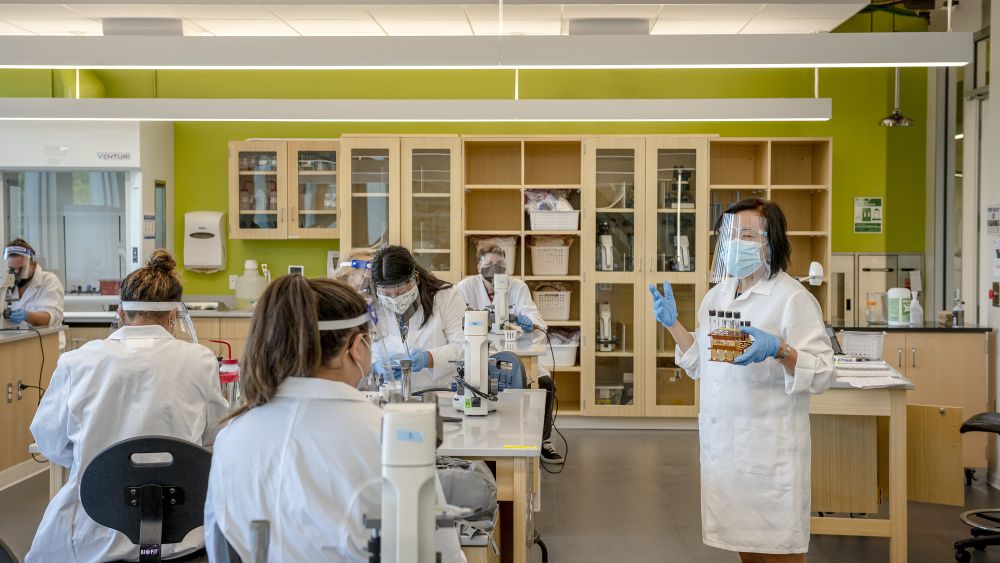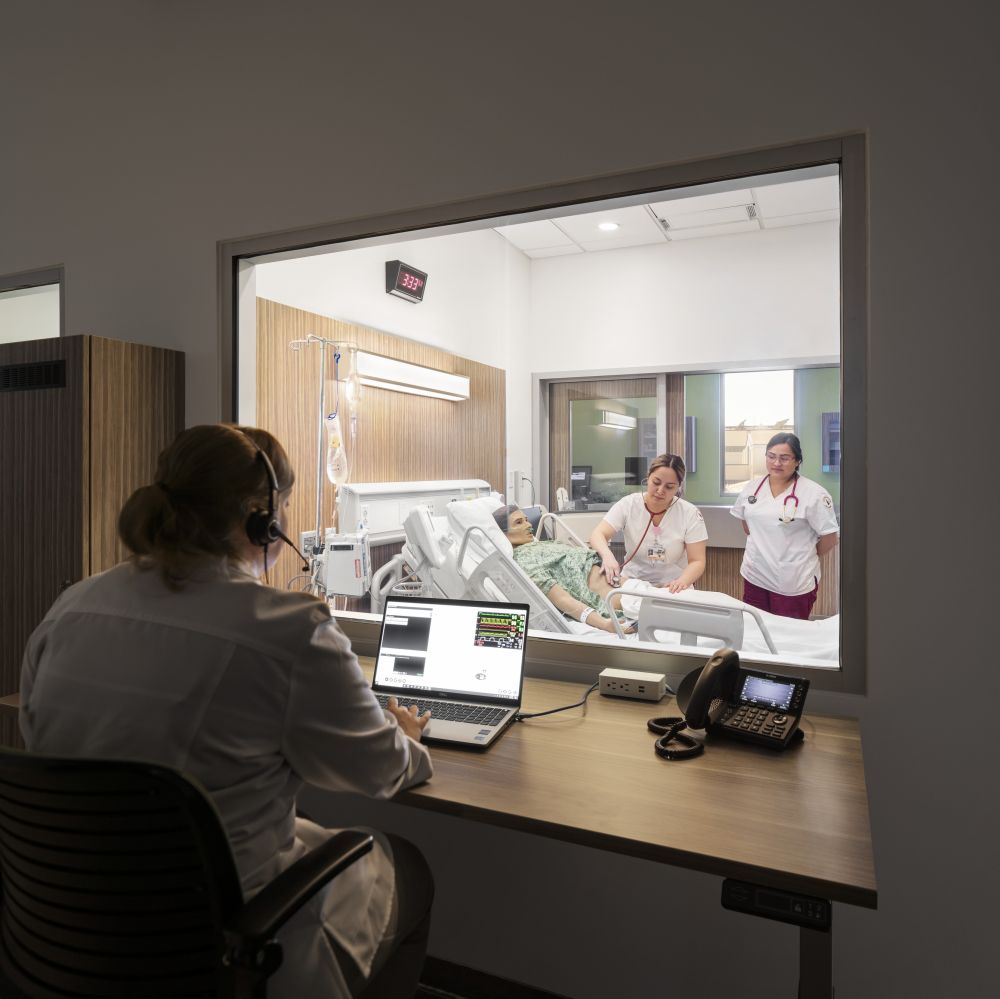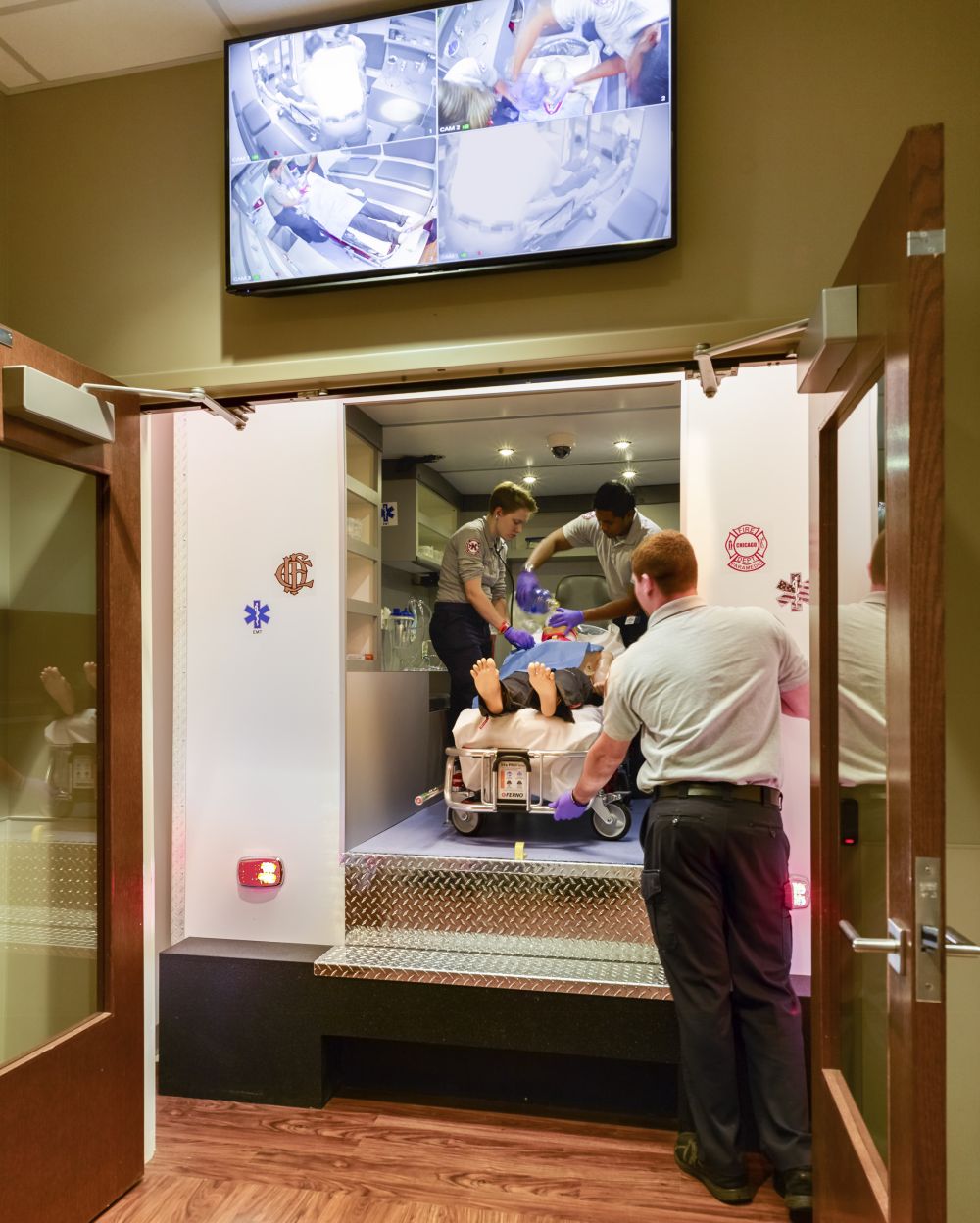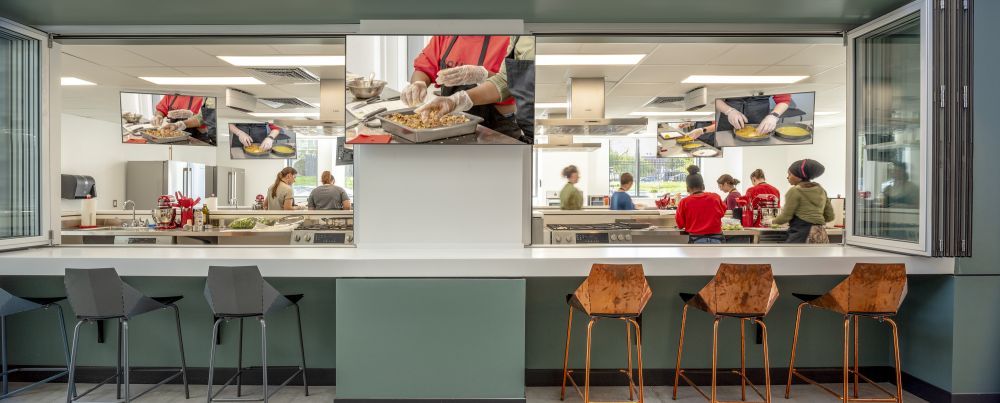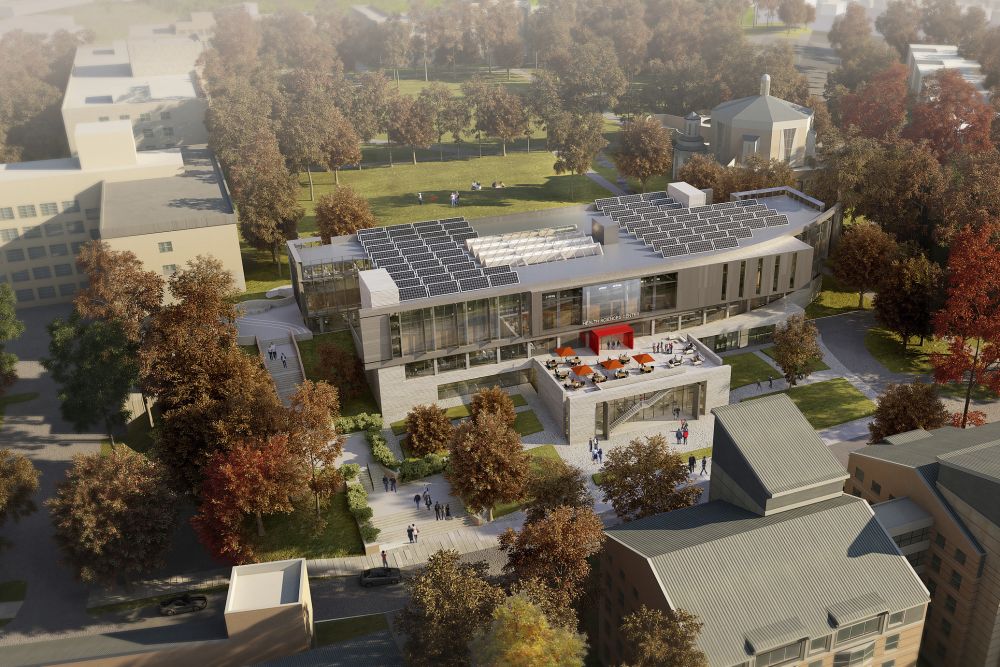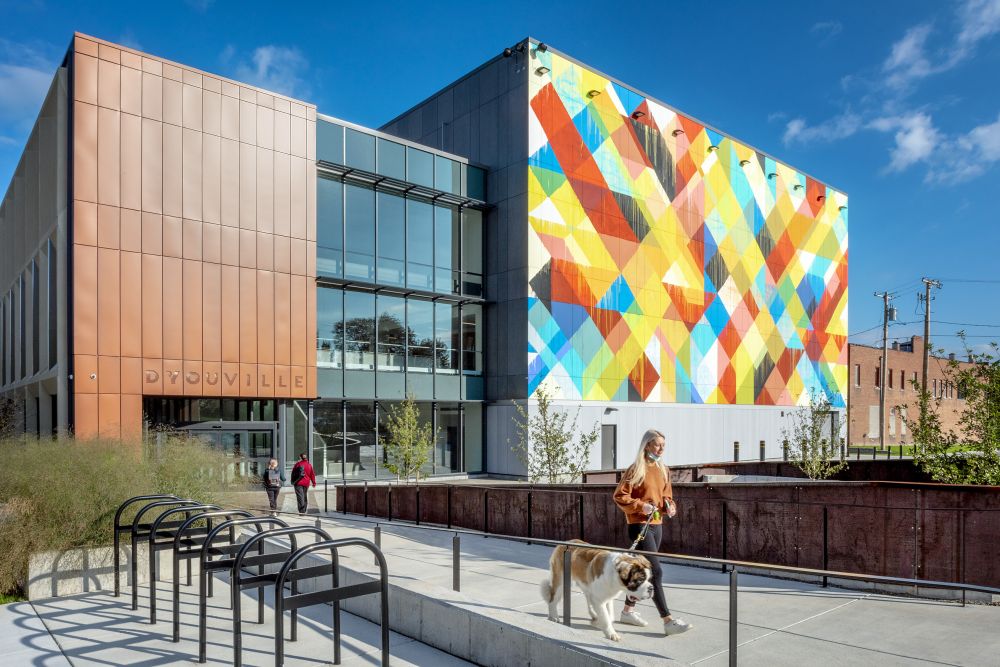Navigating a new era in designing nursing education spaces
Sumegha Shah, AIA, and Sandy McElligott, MBA, RN
January 23, 2024
Social Sharing
A new era of healthcare delivery is upon us. With continually progressive health challenges and efforts to deliver equitable care, more can be done to arm students with the agility needed to understand, participate in, develop and advocate for continuous improvement in integrated health systems.
For the nursing profession, this means students are no longer limited to following past precedent or traditional education paths. Collaboration with engineering, entrepreneurship, robotics, data science, virtual care and social justice will soon become the norm in nursing education. Sandy McElligott, a registered nurse and consultant with Blue Cottage of CannonDesign, and Sumegha Shah, our health education leader, share thoughts on how we approach designing learning environments to effectively train the next generation of nurses.
Now more than ever, we need to create learning environments that bridge across academic rigor, public good and bold innovation.
The landscape of nursing
The projected nursing shortage and demand for growth across the U.S. is well known and documented. According to the Bureau of Labor Statistics, employment of registered nurses is projected to grow six percent from 2022 to 2032, faster than the average for all occupations. About 193,100 openings for registered nurses are projected each year, on average, over the next decade. Many of these openings are expected to result from the need to replace workers who transfer to different occupations or retire.
Exacerbating the issue, some nursing education programs are struggling to accept qualified applicants or can’t accept students due to insufficient clinical placement sites, faculty, preceptors, classroom space and budget cuts. Accreditation standards and federal and state policies are being revised to address these gaps. For example, the recent passing of Senate Bill S447C by the State of New York allows nursing students to complete up to one-third of their clinical training through simulation.
This means nursing education spaces must be easily adaptable to current and future curricula, schedules, space needs and teaching modalities. As space planners for higher education programs, our approach integrates these types of trends alongside industry projections and the potential impact on institutions. We customize the built environment to support the education and training needs of nurses today and those to come.
What will matter most in nursing education spaces?
The future of health education is being shaped by a confluence of forces, underlying how important it is to create environments that can adapt and respond as health sciences and medical education continue to be refined.
Here are five key trends impacting nursing education spaces:
- Technology — Rapidly evolving technologies are increasing/decreasing the demand for certain skillsets and professions.
- Evolution of practice — The gap between science, medicine and technology is closing, making way for incredible new fields with resounding impacts on healthcare.
- Student well-being — Institutions have a significant responsibility to support the psychological, social and physical well-being of students.
- Shifting learning methods — The continuum of education and training is always shifting to reflect the changing context of patient care delivery.
- Humanization of care — Nursing professionals must balance medical knowledge and skills with compassion and focus on patients as individuals.
A more dynamic teaching structure
Patients receive safer, higher-quality care when healthcare professionals work effectively on a team and clearly understand the role each teammate plays. Recognizing the imperative for cohesive interdisciplinary collaboration, nursing education programs are progressively shaping learning environments that foster teamwork across various disciplines. This shift signifies the rise of interprofessional education as a fundamental pedagogical approach.
To support this instructional approach, we design experiential learning spaces that connect nurses to the intricacies of delivering care through effective teamwork. These spaces not only give students the leading-edge technical skills they need but also provide a strong sense of mission and confidence in advancing their expertise by sharing knowledge with others.
High-tech, hands-on learning
As didactic training is slowly moving to self-delivery, hybrid and hy-flex models, physical training environments are transitioning to models that maximize student retention, engagement and collaboration. Today, hands-on simulation training is the cornerstone of modern healthcare education, delivering flexible teaching environments that allow nursing education programs to continue responding to ever-changing needs.
Engaging and serving the community
Highly visible and integral to the communities they serve, nursing education facilities are designed to provide culturally appropriate and equitable healthcare and to train a local workforce to serve diverse populations. As teaching environments, they enable students to work alongside trained care staff to improve community health and gain the real-world experience needed to enter the workforce.
These institutions are also finding ways to create meaningful dialogue and opportunities for collaboration, innovation and research with individuals and organizations in their communities — a trend that will continue to grow. Initiatives may be structured as nutrition research programs, primary care wellness clinics, mobile treatment units, specialty clinics and more. By creating community spaces that support training, mentoring, education and public conversation, health education facilities of all kinds can help nurture trust between community members and healthcare providers. If opportunities for connection are designed through the lens of service, they can put the community on a path to better health and wellbeing. And that's what becoming a nurse is all about — helping people flourish.
